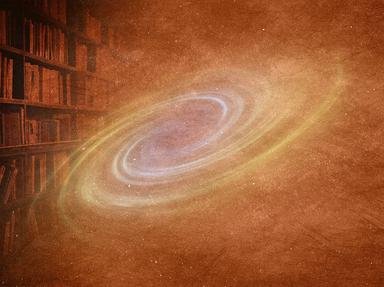Quiz Answer Key and Fun Facts
1. Around 1768-70, Benjamin Franklin and his whaler cousin Timothy Folger drew up a map to help mail ships cross the Atlantic Ocean to North America faster, by avoiding a particular natural phenomenon. What "river in the ocean" does the Franklin-Folger Chart depict?
2. In 1775, in Birmingham, England, Matthew Boulton and James Watt entered into partnership to manufacture industrial versions of a piece of equipment whose efficiency Watt had improved by adding a separate condensing chamber. What was this invention, patented by Watt, that made the Industrial Revolution possible?
3. In 1776, a clock maker named John Harrison died in London, England, after a life's work developing an accurate marine chronometer. What important geographic measurement did Harrison's precise workmanship make possible?
4. The discovery of the element necessary for fire to burn and for creatures like mice to stay alive was "in the air" in the 1700s. Carl Wilhelm Scheele isolated it in 1772, Joseph Priestly discovered it in 1774, and Antoine Lavoisier followed them in 1775. Scheele called it "fire air" and Priestly "dephlogisticated air"; but Lavoisier identified it as an element and gave it a name that stuck. What did Lavoisier call it?
5. Because France lacked access to natural sources of the essential oxidizing ingredient in gunpowder, Antoine Lavoisier began in 1775 to apply the scientific method to its manufacture. What is the common term for this compound, scientifically called potassium nitrate?
6. In 1771, Charles Messier - nicknamed by King Louis XV "the comet ferret" - began keeping a numbered list of astronomical objects that were not comets but could be confused with them. Astronomers still refer to this list, which was published in 1774 and includes nebulae, star clusters, and what other objects?
7. In April 1770 Captain James Cook anchored the HMS Endeavor in a body of water he at first called Sting Ray Harbour, but because the expedition's scientists Joseph Banks and Daniel Solander discovered hundreds of previously unknown plants in just a few days on its shores, what did Cook name this body of water?
8. Although one was installed by Sir John Harington in a residence of Queen Elizabeth I in 1596, and other inventors made improvements later, a practical version of this device was patented by Alexhander Cumming in 1775, after he invented the S trap that reduced back odors. What was this scientific advance that would become important for maintaining public health?
9. In 1772, a young woman left Hanover in Germany to join her musician / amateur astronomer brother in England as a singer, but she went on in the following decades to discover eight comets, to identify numerous deep space objects, to write up and see published a record of her brother's observations of over 500 new nebulae and star clusters, and to become the first woman known to be paid for her scientific work. Who was this little but intellectually mighty woman in the history of science?
10. In 1776, at the beginning of the American Revolutionary War, Connecticut native and Yale student David Bushnell developed a piece of technology he called a turtle, the prototype of a naval vessel still in use today. What was Bushnell's invention?
Source: Author
nannywoo
This quiz was reviewed by FunTrivia editor
rossian before going online.
Any errors found in FunTrivia content are routinely corrected through our feedback system.

